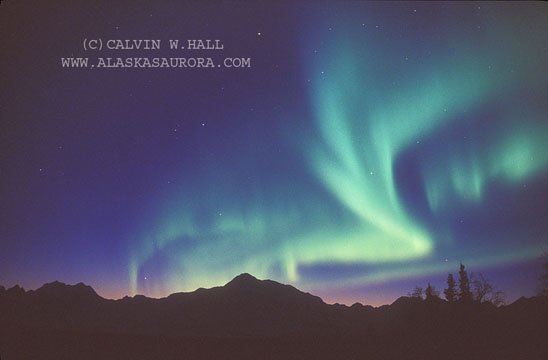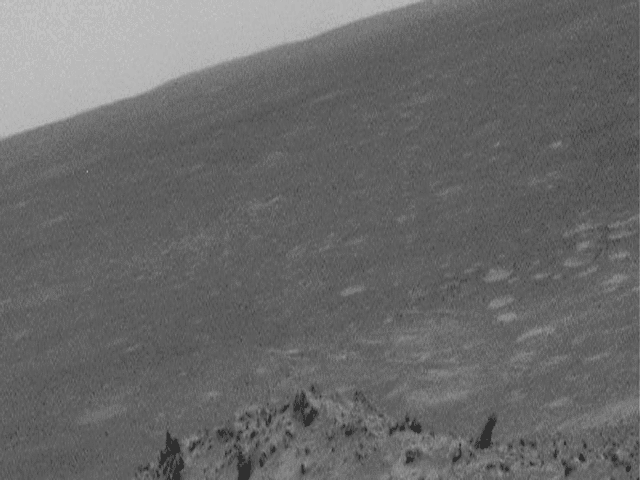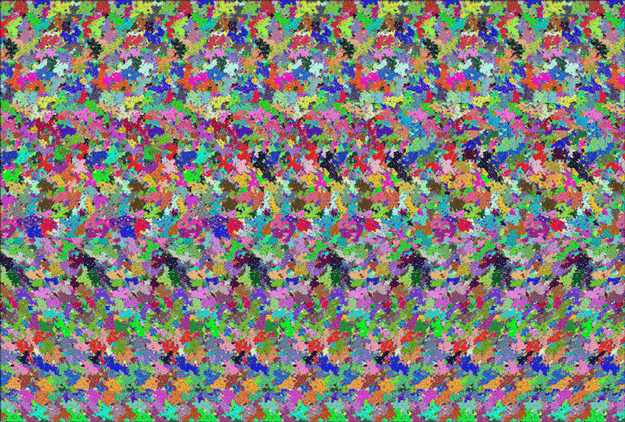|
quanta-m |
|
|
Our Solar Situation BIG SUNSPOT: More than four years after solar maximum, the sun continues to produce big sunspots. One is transiting the solar disk today: sunspot 756. It's about five times wider
than Earth and poses a threat for M-class solar flares. (continued below)
Jan. 19, 2005 — An ancient star catalogue lost for centuries has emerged from a Titan's shoulder,
according to a study into a Roman statue of Atlas presented at the recent American Astronomical Society meeting in San Diego,
Calif. Known as the Farnese Atlas, the seven-foot-tall marble statue depicting the mythical Titan carrying the Earth
on his shoulder is a Roman copy from the 2nd century A.D. of a Greek original dating to before the birth of Christ.
It is part of the Farnese Collection in the National Archeological Museum in Naples, Italy. The statue is peculiar as the
two-foot-wide globe carried by a bearded Atlas crouched down on one knee is covered with 41 star constellations placed against
a grid of circles, including the celestial equator, the tropics, the colures, the ecliptic, the Arctic Circle and the Antarctic
Circle. The location of these constellations carved in marble are an accurate rendition of the lost star catalogue of Hipparchus,
according to astronomer Bradley Schaefer of Louisiana State University in Baton Rouge. Dating to 129 B.C., Hipparchus' catalogue
listed about 1,000 stars classified not only by location, but by magnitude, or brightness. The work was probably lost in the
fire at the great library in Alexandria, but survived partly as a description in Ptolemy's "Almagest." Perhaps the greatest
astronomer of antiquity, Hipparcus, who flourished around 140-125 B.C., is also credited with the discovery of precession,
the slow motion of the stars and constellations across the sky with respect to the celestial equator, tropics and meridian
lines. Indeed, following Hipparcus' idea of precession, Schaefer realized that the Atlas' marble globe referred to Hipparchus'
star catalog. "Constellations positions shift slowly with the centuries due to precession, so the depicted positions (in the
statue) provide a 'clock'," Schaefer said. The researcher measured the positions of 70 points in the constellation figures
and dated the star positions on the statue to 125 B.C., plus or minus 55 years. The resulting date points directly to Hipparchus
and strongly excludes all previously proposed candidates, ranging from an Assyrian observer around 1130 B.C., too early, and
astronomer Ptolemy around 128 A.D., too late. Schaefer's astronomical analysis also compared the Farnese Atlas with all surviving
ancient sources. "The comparison shows a virtually perfect match with the constellation descriptions of Hipparchus. In contrast,
all other ancient sources differ profoundly from the Atlas," Schaefer wrote in a paper to be published by the Journal for
the History of Astronomy. Moreover, the positioning of the constellation figures on the Farnese Atlas has a accuracy of
about 2 degrees, impossible to be achieved by simple verbal descriptions. "This implies that the source was a star catalogue,
and the only known star catalogues are those of Hipparchus and Ptolemy," said Schaefer. According to Schaefer, it is likely
that the original Greek sculptor was not knowledgeable in astronomy, and needed some visual aid. "The obvious scenario is
that Hipparchus constructed a small working globe based on his star catalogue. This globe was then used by the original Greek
sculptor as a model for the constellation placement on a statue. Finally, the later Roman sculptor used the now lost Greek statue to create the globe that is now in Naples,"
said Schaefer. The discovery of the lost star catalog will allow scholars to study Hipparchus' work deeper, making exhaustive
correlations between all constellation figures on the Farnese Atlas and Ptolemy's Almagest. "There has long been a debate
whether Hipparchus actually had a star catalog or at least what its nature was. Schaefer's work shows that evidence was there
all the time, but it required the proper expertise to decipher it.," stated Owen Gingerich, professor of astronomy and history
of science.
Another View of the Globe
Saturn Probe Photographs Titan The first showed large, round rocks strewn as far as Huygens' viewfinder could see. The second was taken about 10 miles above Titan's surface as Huygens descended, and showed what appeared to be channels cut into a sloping surface. "I'm shocked. Titan from About 10 Miles Up
It's remarkable," Carolyn Porco, of the Cassini Imaging Center, told CNN. "There are river channels. There are channels cut
by something ... a fluid of some sort is my best guess." "This mission has been like a fantasy come true," she said. "It's
a great moment not only for science but for humankind." Cassini carried the European-built Huygens probe to Saturn during
a seven-year voyage, then was in position during the probe's descent to Titan to record and transmit Huygens' data to Earth.
-- Installing computer systems
-- Computer programming -- HTML and technical writing -- Data recovery |
||||
|
Answer provided by Lynn Cominsky (SSU E/PO Director): A common event often mistaken by people in the sky to be a Gamma-Ray burst is an Iridium Flare. If you visit this link
http://www.heavens-above.com, then put in your latitude and longitude, you will be able to see if there were any of these flares reported during this
time. Fomalhaut, a 200-million-year-old
star, is a mere infant compared to our own 4.5-billion-year-old Sun. It resides 25 light-years away from the Sun. Located
in the constellation Piscis Austrinus (the Southern Fish), the Fomalhaut ring is ten times as old as debris disks seen previously
around the stars AU Microscopii and Beta Pictoris, where planets may still be forming. If our solar system is any example,
planets should have formed around Fomalhaut within tens of millions of years after the birth of the star. The Hubble images also provide a glimpse of the outer planetary region
surrounding a star other than our Sun. Many of the more than 100 planets detected beyond our solar system are orbiting close
to their stars. Most of the current planet-detecting techniques favor finding planets that are close to their stars. "The size of Fomalhaut's dust ring suggests that not all planetary
systems form and evolve in the same way — planetary architectures can be quite different from star to star," Kalas explained.
"While Fomalhaut's ring is analogous to the Kuiper Belt, its diameter is four times greater than that of the Kuiper Belt."The astronomers used the Advanced Camera for Surveys' (ACS) coronagraph
aboard Hubble to block out the light from the bright star so they could see details in the faint ring. Doomed Star Eta Carinae Even though Eta Carinae is more than 8,000 light-years away,
features 10 billion miles across (about the diameter of our solar system) can be distinguished. Eta Carinae suffered giant
outburst about 150 years ago, when it became one of the brightest stars in the southern sky. Though the star released as much
visible light as a supernova explosion, it survived the outburst. Somehow, the explosion produced two lobes and a large, thin
equatorial disk, all moving outward at about 1.5 million miles per hour. Estimated to be 100 times heftier than our Sun, Eta
Carinae may be one of the most massive stars in our galaxy. 
Our Business Philosophy
|
||||





















 Imagine trekking in a lunar rover across miles of the Moon's rough surface. Your mission: to explore a crater with suspected
deposits of ice.
Imagine trekking in a lunar rover across miles of the Moon's rough surface. Your mission: to explore a crater with suspected
deposits of ice.  The Vision for Space Exploration calls for human and robotic missions to the Moon, Mars and beyond. To realize these ambitious
goals, we will need more powerful and efficient propulsion and power-generation systems -- systems that can thrust a spacecraft
out of Earth's orbit to the far reaches of the Universe.
The Vision for Space Exploration calls for human and robotic missions to the Moon, Mars and beyond. To realize these ambitious
goals, we will need more powerful and efficient propulsion and power-generation systems -- systems that can thrust a spacecraft
out of Earth's orbit to the far reaches of the Universe.